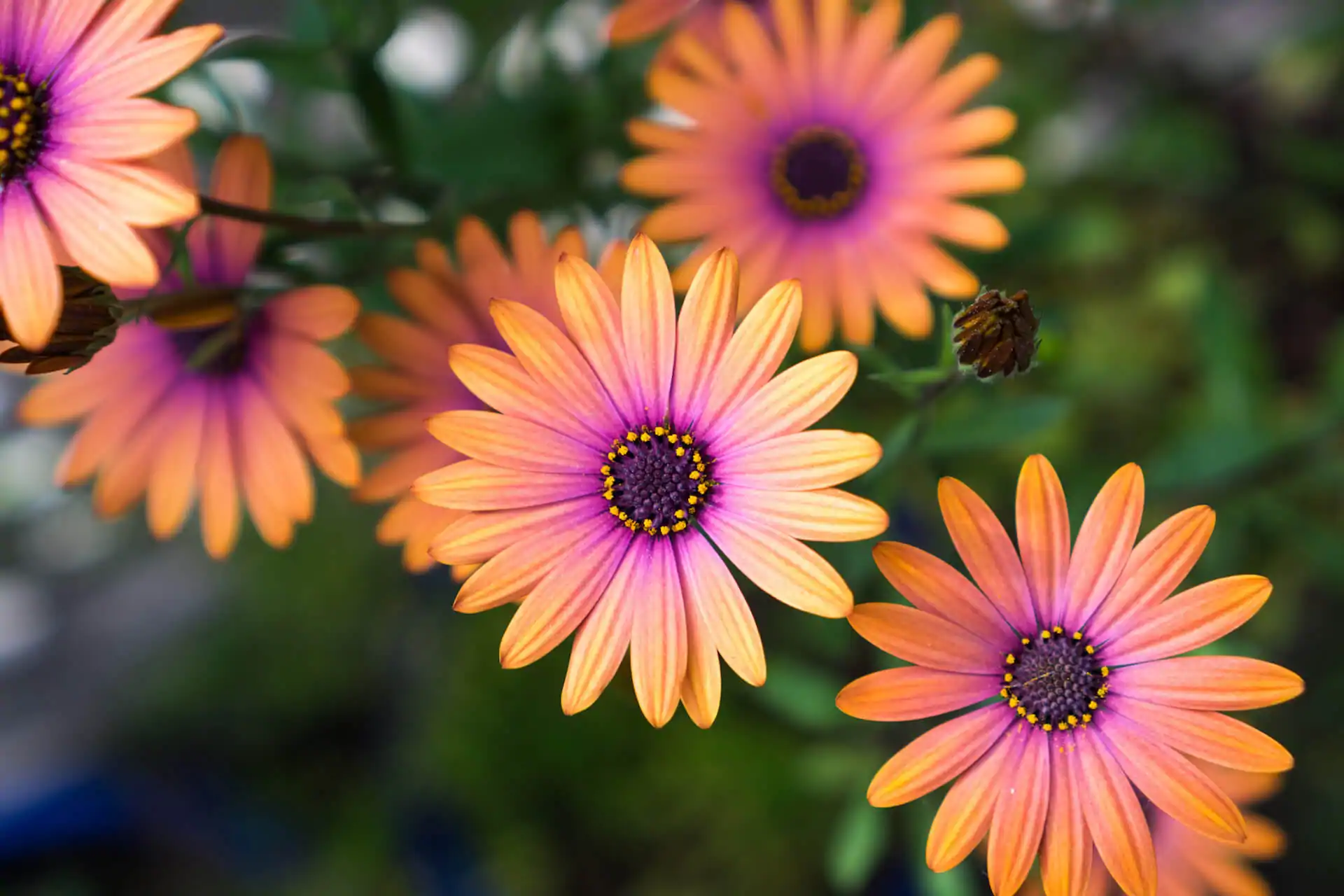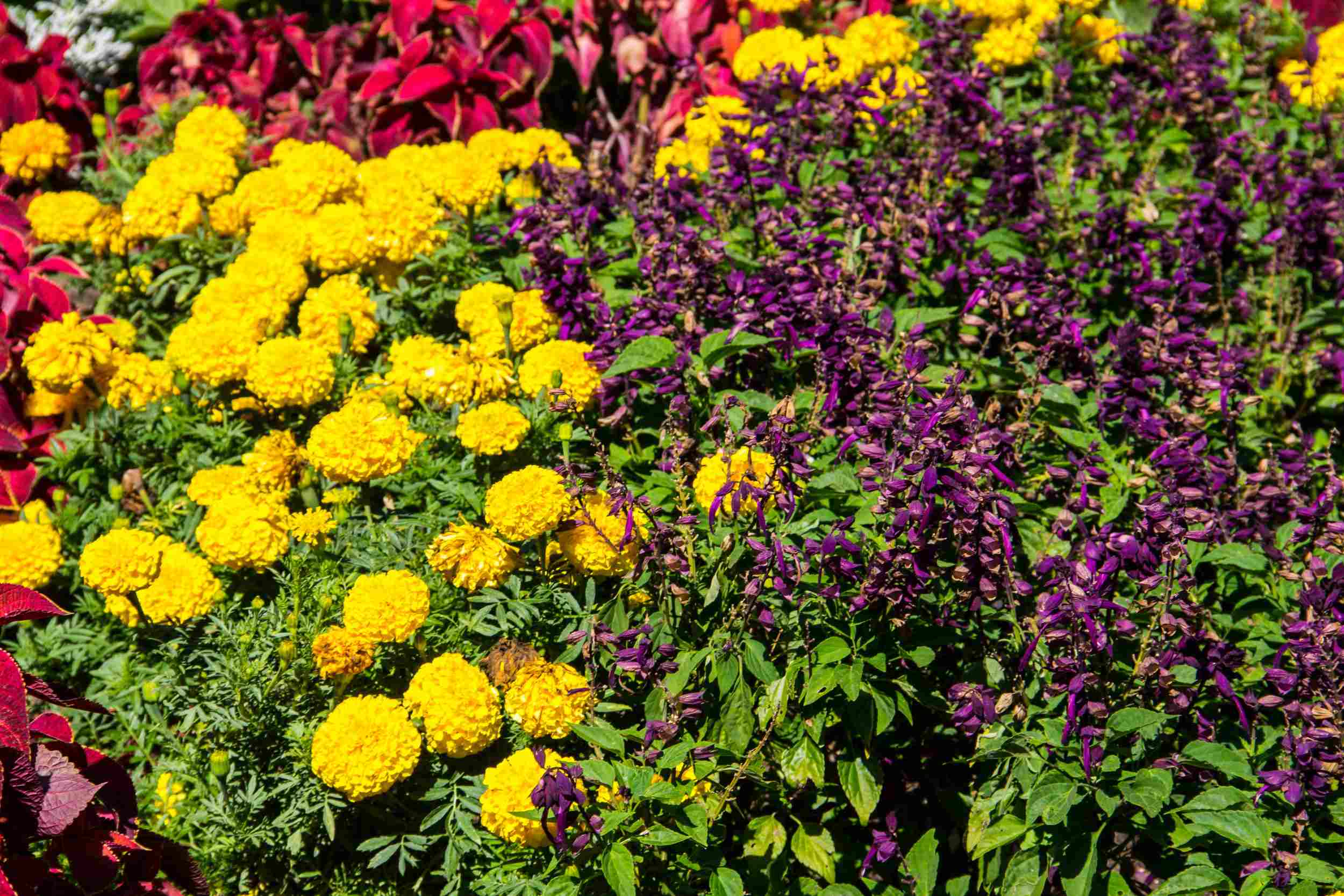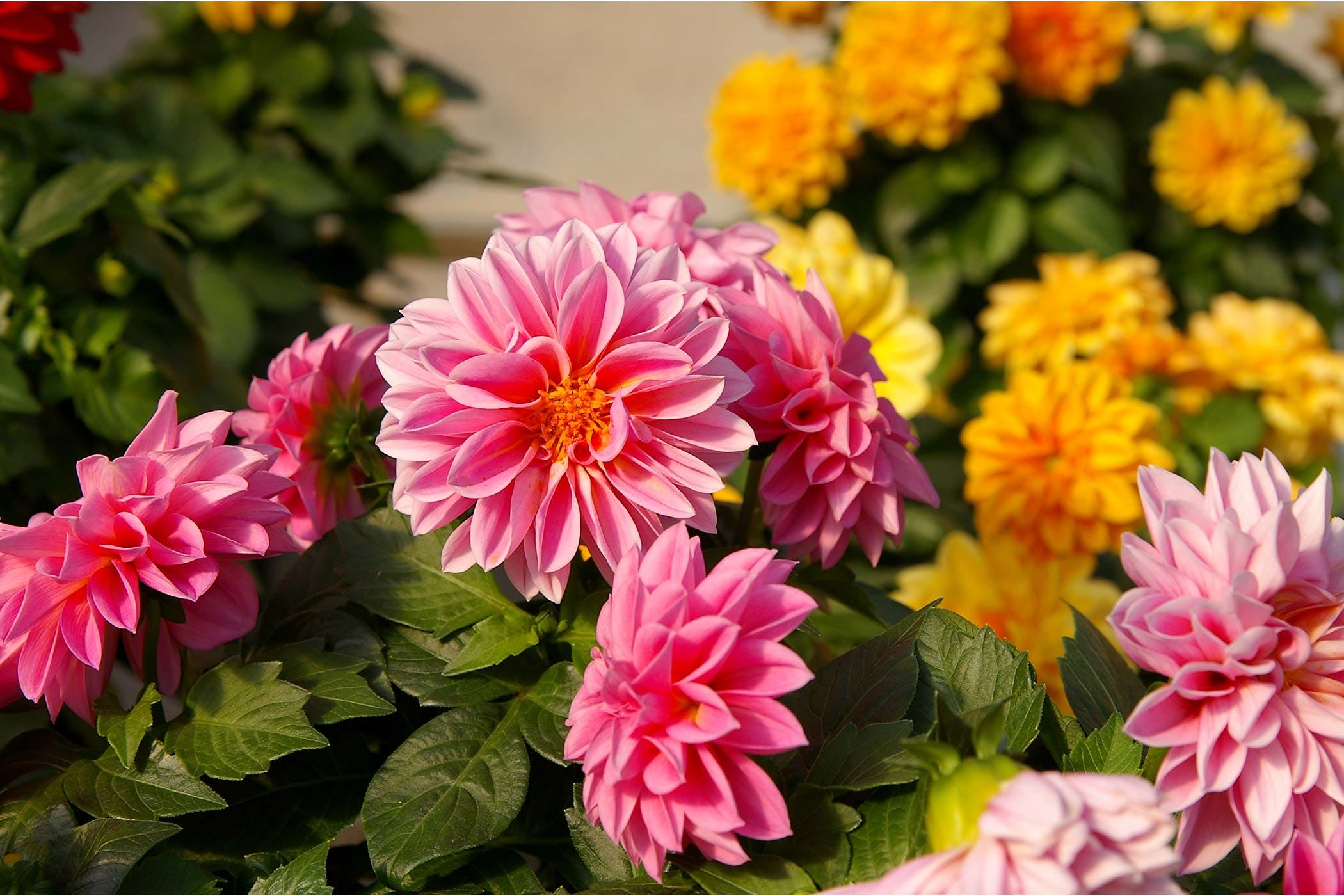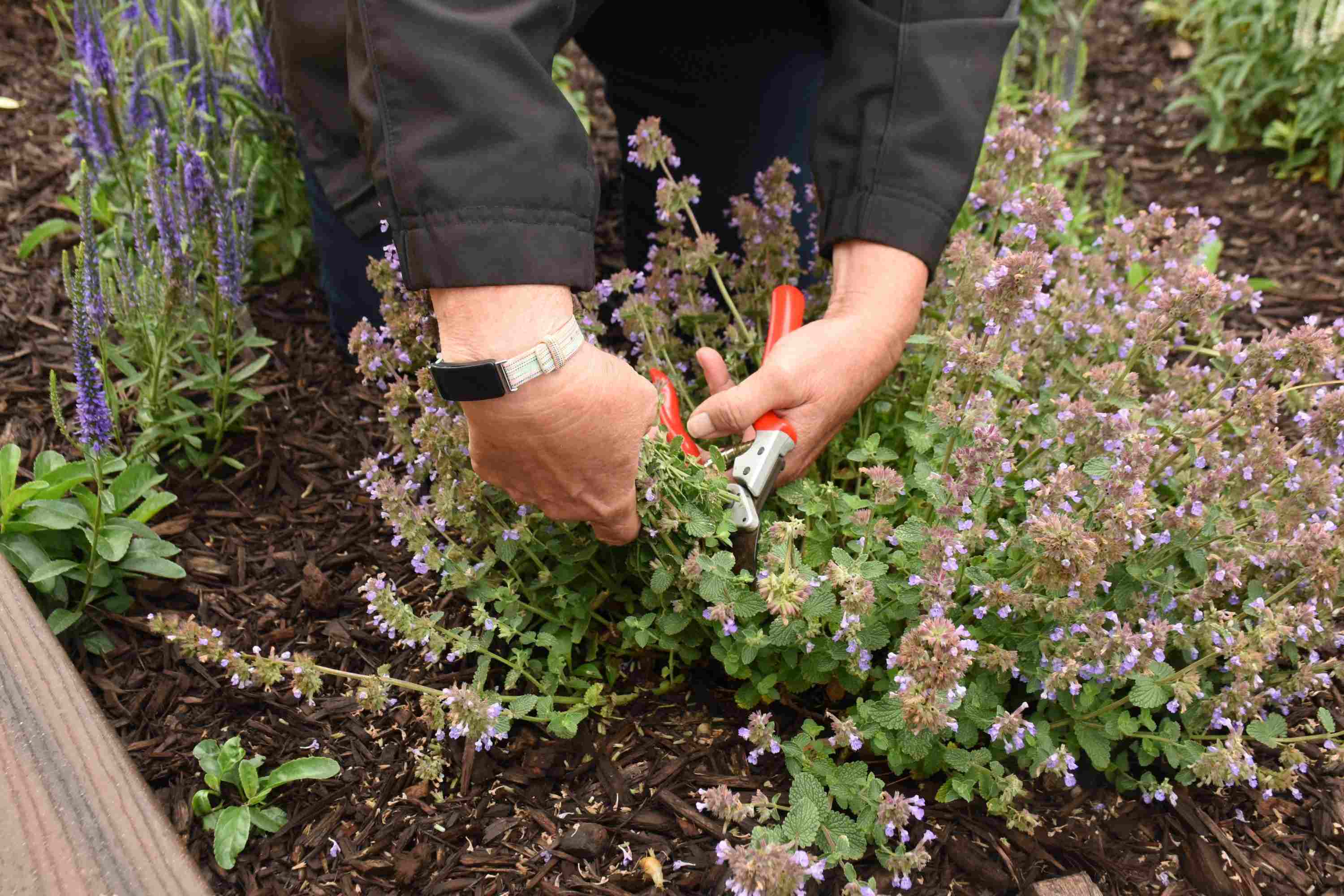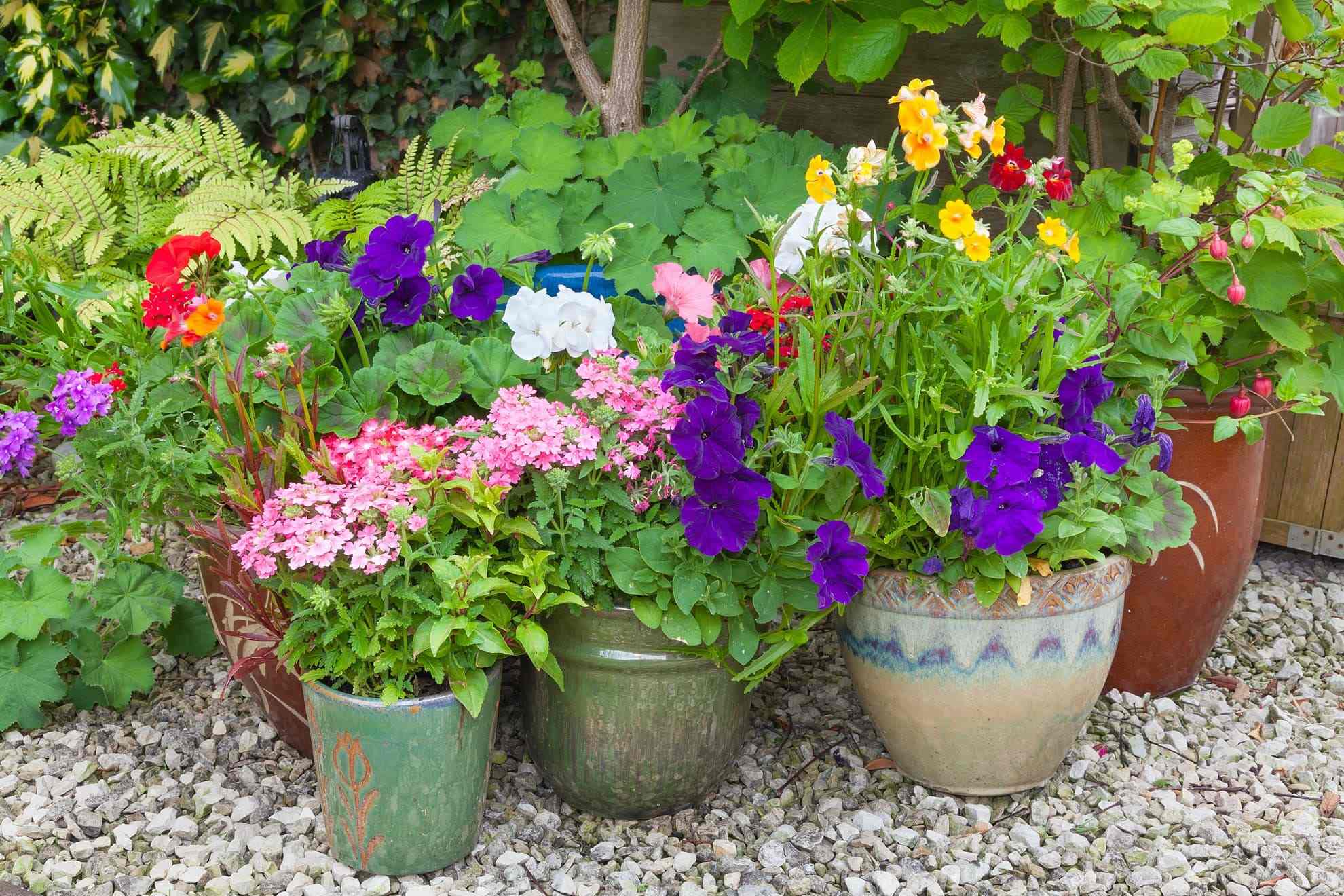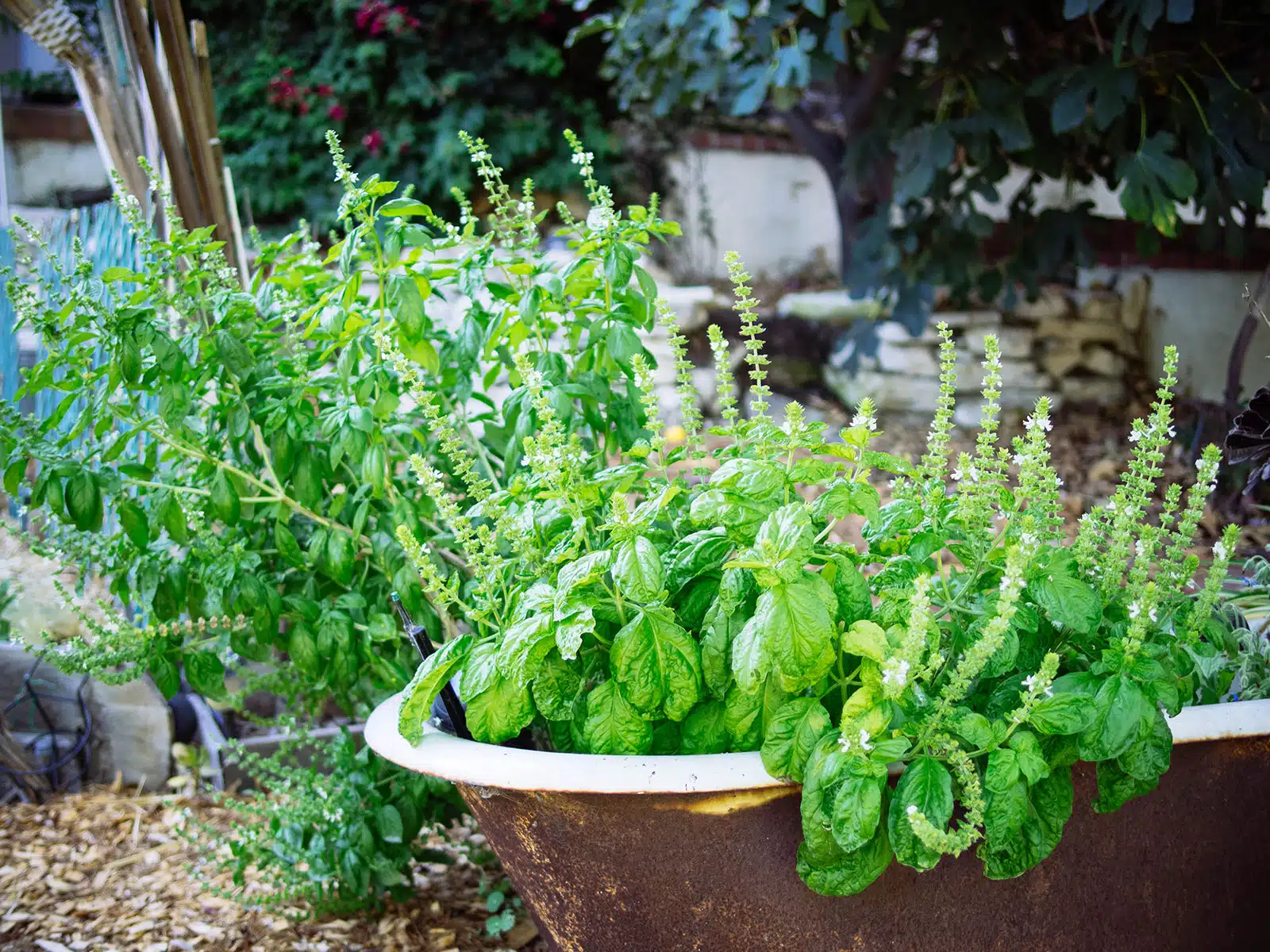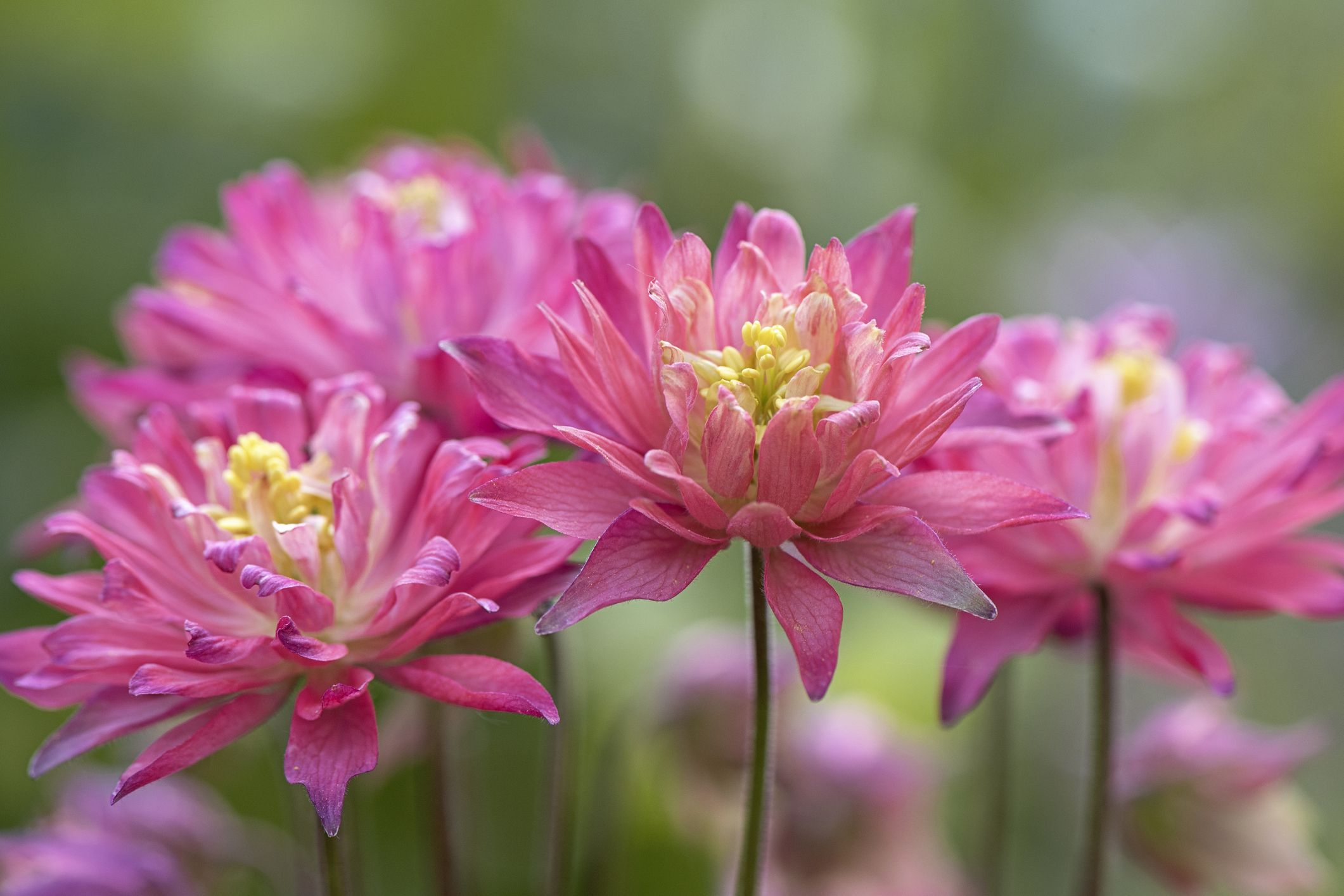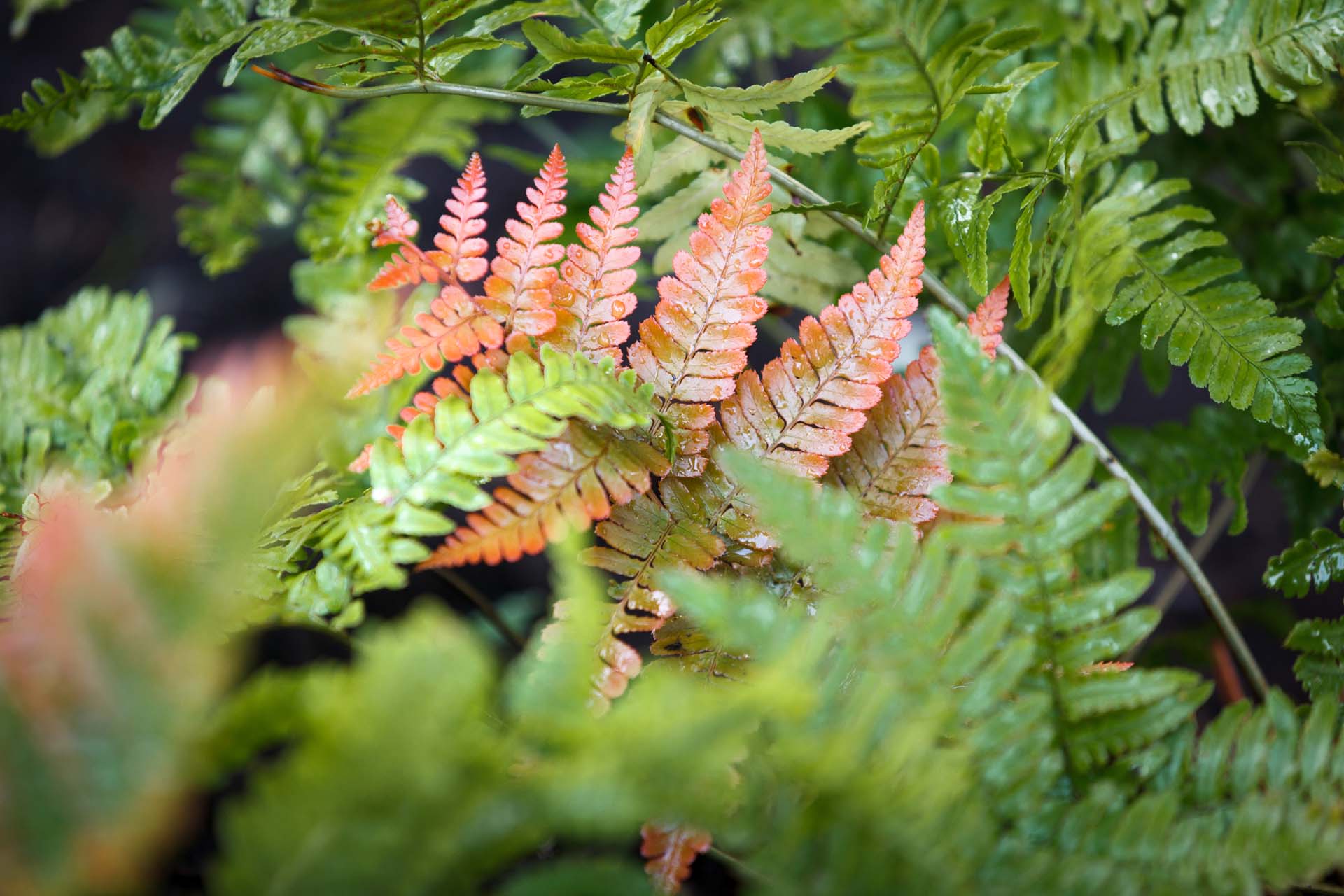Home>Gardening Techniques>Seasonal Gardening>When To Divide Perennials


Seasonal Gardening
When To Divide Perennials
Published: August 23, 2023
Learn when to divide perennials in your garden with our seasonal gardening tips. Ensure your plants thrive with proper division techniques.
(Many of the links in this article redirect to a specific reviewed product. Your purchase of these products through affiliate links helps to generate commission for Chicagolandgardening.com, at no extra cost. Learn more)
Table of Contents
Introduction
Welcome to the wonderful world of seasonal gardening! As the seasons change, so too does the beauty that surrounds us in nature. And what better way to embrace the changing seasons than by cultivating a vibrant and thriving garden filled with stunning perennials?
Perennials are a staple in any garden, providing enduring beauty year after year. These resilient plants have the remarkable ability to survive through the harshest of winters and bloom anew come springtime. However, as perennials continue to grow and spread, it is important to give them the space they need to thrive. This is where the process of dividing perennials becomes crucial.
Dividing perennials involves separating the plant into smaller sections, ensuring that each portion has enough space and resources to flourish. This practice not only helps keep your garden healthy and visually appealing, but it also allows you to propagate new plants and expand your garden’s range.
But when is the best time to divide perennials? How do you know if your perennials are ready for division? And what steps should you follow to ensure a successful divide? Let’s delve into the world of dividing perennials and discover the answers to these questions and more!
Understanding Perennials
Before we dive into the intricacies of dividing perennials, let’s take a moment to understand these amazing plants. Perennials are plants that have a lifespan of more than two years. Unlike annuals, which complete their life cycle in one year, perennials have the ability to regrow and bloom year after year.
Perennials come in a wide variety of shapes, sizes, and colors, making them a versatile choice for any garden. From delicate flowers like roses and lilies to hearty foliage plants like hostas and ferns, there is a perennial to suit every gardener’s taste.
These plants establish deep root systems, allowing them to survive harsh weather conditions and adapt to their surroundings. With proper care and maintenance, perennials can thrive for many years, becoming the backbone of your garden’s design.
One of the key characteristics of perennials is their tendency to grow and spread over time. As they mature, they can become crowded and overcrowded, leading to competition for space, nutrients, and sunlight. This is where dividing perennials becomes essential.
By dividing perennials, you can rejuvenate the plant, promote healthier growth, and prevent overcrowding. Additionally, dividing perennials allows you to propagate new plants, which can be shared with friends or used to expand your garden.
Now that we have a basic understanding of perennials, let’s explore the factors to consider before deciding to divide your beloved plants.
Factors to Consider
Dividing perennials is a beneficial practice for both the health of the plant and the overall aesthetics of your garden. However, before you grab your gardening tools, there are several factors to consider to ensure a successful division:
- Plant Type: Different perennials have different growth habits and tolerances to division. Some perennials, like daylilies and hostas, are known for their ease of division, while others, like peonies and ornamental grasses, may require more careful handling. Research the specific requirements of your plant before attempting to divide it.
- Plant Age: The age of the plant can also affect its ability to be divided. Younger plants, typically between 2 and 4 years old, tend to be more robust and respond well to division. Older plants may have larger root systems that are more challenging to divide successfully. Evaluate the maturity of your plant before deciding to divide.
- Growth Patterns: Understanding the growth patterns of your perennials is vital. Some perennials grow in clumps, while others spread through rhizomes or runners. Clumping perennials are generally easier to divide since you can simply separate the clumps, while spreading perennials require a more careful approach to ensure each division has enough root and shoot structure.
- Timing: The timing of the division is crucial for the plant’s health and successful establishment. Most perennials prefer to be divided during their dormant season, either in early spring before new growth appears or in the fall before the ground freezes. However, some perennials, like irises, should be divided immediately after flowering. Research the specific needs of your plant to determine the best time for division.
- Weather Conditions: Consider the weather conditions when planning to divide your perennials. Ideally, choose a cool and overcast day to minimize stress on the plants. Dividing perennials during hot, dry weather can increase the risk of transplant shock and hinder the plants’ ability to establish in their new locations.
By taking these factors into account, you can make informed decisions about when and how to divide your perennials, ensuring the best chances of success. Now that we’ve covered the factors to consider, let’s explore the signs that indicate your perennials are ready for division.
Signs that Perennials Need Dividing
Dividing perennials at the right time is crucial for their health and vigor. But how do you know when it’s time to divide your beloved plants? Here are some signs that indicate your perennials may need dividing:
- Overcrowding: If your perennials have become crowded and are competing for space, resources, and sunlight, it may be time to divide them. Overcrowded plants can exhibit stunted growth, smaller blooms, and a decline in overall health. Dividing them allows each portion to have enough room to grow and thrive.
- Reduced Bloom: Have you noticed that your perennials are producing fewer flowers than usual? This could be a sign that they need dividing. As perennials grow and spread, the center of the clump becomes older and less productive. Dividing the plant helps rejuvenate it, stimulating new growth and restoring its ability to produce abundant blooms.
- Large Dead Zones: If you notice large dead zones in the center of your perennials, it’s a clear indication that they need dividing. These dead zones occur when the older parts of the plant die off, leaving gaps in the foliage or unproductive areas. Dividing the plant allows you to remove the dead zones and encourage healthy new growth.
- Unhealthy Appearance: If your perennials look sparse, weak, or unhealthy, it may be a sign that they are in need of division. Overcrowded plants can suffer from inadequate airflow, which can lead to disease and pest issues. Dividing the perennials improves air circulation and enhances overall plant health.
- Limited Spreading: Some perennials, such as those that spread through runners or rhizomes, may exhibit limited spreading if they are not divided regularly. If you notice that the plant’s growth has become stagnant or the spreading has slowed down significantly, it’s time to divide and encourage new growth.
Observing these signs in your perennials is a clear indication that they are ready to be divided. Dividing at the right time can revive the plants, promote better blooming, and improve overall garden aesthetics. Now that we know the signs, let’s explore the best time to divide your perennials.
Best Time to Divide Perennials
Timing is crucial when it comes to dividing perennials. Choosing the right time ensures the best chances of success for both the parent plant and the divisions. While the exact timing can vary depending on the specific perennial, here are some general guidelines to help you determine the best time to divide:
Early Spring: For many perennials, early spring is an ideal time for division. As soon as you see new shoots emerging from the ground, it’s a good indication that the plant has come out of its winter dormancy. Dividing in early spring allows the plants to establish before the heat of summer, giving them ample time to develop a strong root system.
Late Summer or Fall: Some perennials can also be divided in late summer or early fall. This timing allows for cooler weather and ample time for the divisions to establish before winter sets in. Dividing perennials in the fall also gives them a head start in the following spring, as they can focus on establishing strong roots rather than producing foliage and flowers.
After Flowering: Certain perennials, such as irises, poppies, and primroses, prefer to be divided immediately after flowering. This allows them to have a full growing season to establish before going dormant in winter. Dividing these perennials at other times may disrupt their flowering cycle and delay their growth.
It’s important to note that not all perennials follow these general guidelines, so it’s essential to research the specific needs of your plants before dividing them. Some perennials, like peonies, are best divided in the fall, while others may have more specific requirements. In any case, it’s always best to divide perennials when they are not experiencing stress, such as during extreme heat or drought.
When preparing to divide your perennials, make sure you have all the necessary tools, such as a sharp garden knife, a shovel or garden fork, and clean containers or pots for the divisions. Now that we know the best time to divide, let’s explore the steps to successfully divide perennials.
Steps to Divide Perennials
Dividing perennials is a straightforward process that can be easily accomplished with a few simple steps. Follow these guidelines to successfully divide your beloved plants:
- Prepare: Start by preparing the area where you will be working. Clear away any debris, dig up any nearby plants that may interfere, and have all your tools and containers ready for use.
- Water: It’s important to water the perennial thoroughly a day or two before dividing. Moist soil makes it easier to lift and separate the plant without causing undue stress.
- Lift: Carefully dig around the base of the perennial, working your way around the plant to loosen the roots. Use a garden fork or shovel to gently lift the plant, taking care not to damage the roots.
- Divide: Once you have lifted the perennial, examine the root ball and locate natural divisions or areas with multiple growth points. Use your hands or a sharp garden knife to separate the plant into smaller sections. Ensure that each division has enough roots and shoots to thrive.
- Trim: Trim any damaged, dead, or excessively long roots or foliage from the divisions. This will help reduce stress and promote new growth.
- Plant: Replant the divided sections in their new locations, ensuring they are planted at the same depth as they were previously. Backfill the soil and gently firm it around the divisions, making sure there are no air pockets.
- Water and Mulch: Give your newly divided perennials a good watering to help them settle in their new homes. Apply a layer of organic mulch around the base of the plants to help conserve moisture and suppress weed growth.
- Monitor and Care: Keep a close eye on the divided perennials and provide regular care as needed. Water them regularly, especially during the establishment period, and provide them with appropriate sunlight and fertilization. Watch for any signs of stress or disease and take prompt action if necessary.
Following these steps will ensure a successful division process and help your perennials thrive in their new locations. Now that we’ve explored the steps to divide perennials, let’s move on to the essential aftercare for the divided plants.
Aftercare for Divided Perennials
After successfully dividing your perennials, it’s important to provide proper aftercare to ensure their successful establishment and continued growth. Here are some essential aftercare practices to follow:
- Watering: Water the divided perennials immediately after planting to help settle the soil and provide hydration to the roots. Keep the soil consistently moist but not waterlogged during the establishment period. Gradually reduce the frequency of watering as the plants establish themselves.
- Mulching: Apply a layer of organic mulch, such as shredded leaves or wood chips, around the base of the divided perennials. Mulch helps conserve moisture, suppress weed growth, and insulate the soil, providing a favorable environment for the plants’ root development.
- Fertilization: Apply a balanced, slow-release fertilizer to the divided perennials according to the specific needs of the plant. This will provide the necessary nutrients for healthy growth and establishment. Follow the fertilizer package instructions for dosage and timing.
- Staking and Support: If the divided perennials have tall or floppy stems, provide them with support in the form of stakes or cages. This will prevent the plants from bending or breaking under their own weight and help them grow upright and strong.
- Pruning: Remove any dead or damaged foliage as well as spent flowers from the divided perennials. This will promote new growth and prevent the plants from directing energy towards unproductive parts. Be careful not to remove too much foliage, as the leaves contribute to the plant’s energy production.
- Monitor for Pests and Diseases: Keep an eye out for any signs of pests or diseases on the divided perennials. Common pests like aphids and snails, as well as diseases like powdery mildew, can affect the health of the plants. Take immediate action if you notice any issues, using organic pest control methods or appropriate treatments.
- Divided Plant Recovery: Give the divided perennials time to recover and establish themselves. It’s normal for the plants to take a few weeks or even a full season to fully adapt and show new growth. Have patience and continue to provide proper care and maintenance.
- Record Keeping: Keep a record of the divided perennials, noting the date of division, the location of the divisions, and any specific care instructions. This will help you keep track of their progress and identify any patterns or issues for future reference.
By providing diligent aftercare, you will help your divided perennials thrive and flourish in their new locations. Now that we’ve covered the essential aftercare practices, let’s explore some common mistakes to avoid when dividing perennials.
Common Mistakes to Avoid
Dividing perennials can be a rewarding and successful process if done correctly. However, there are some common mistakes that gardeners should avoid to ensure the best outcomes for their divided plants. Here are some mistakes to steer clear of:
- Dividing at the Wrong Time: Timing is crucial when it comes to dividing perennials. Dividing them at the wrong time, such as during extreme heat or when they are actively blooming, can cause stress and hinder their ability to establish. Research the specific needs of your plant and divide them during their preferred dormant season.
- Not Preparing the Soil: It’s important to properly prepare the soil before dividing perennials. Ensure the soil is well-draining and amended with organic matter, providing a fertile environment for the divisions to establish. Neglecting soil preparation can hinder their growth and overall health.
- Ignoring Plant Variety Requirements: Each perennial variety has its own growth habits, preferences, and requirements. Ignoring these specific needs can lead to unsuccessful divisions. Research the individual requirements of your perennials, including sun exposure, soil pH, and water requirements, and ensure that the new locations meet their needs.
- Incorrect Division Technique: Carefully dividing perennials is essential to their success. Using dull or improper tools, not making clean cuts, or dividing the plant too roughly can damage the roots and set back the growth of the divisions. Take your time, use sharp and clean tools, and divide the plant gently, ensuring each division has adequate roots and shoots.
- Overcrowding the New Planting Location: One of the main reasons for dividing perennials is to give them more space to grow. Avoid overcrowding the new planting location by spacing the divisions appropriately. Giving each division enough room allows them to receive adequate sunlight, nutrients, and airflow.
- Skipping Aftercare: Aftercare is crucial for the successful establishment of divided perennials. Neglecting to water, mulch, fertilize, and monitor the plants can lead to their decline. Be consistent with aftercare practices and provide continued support until the divisions are well-established.
- Not Labeling Divisions: It’s easy to forget the specific variety or name of each divided perennial. Not labeling the divisions can lead to confusion in the future, especially if you plan on sharing or selling the plants. Use plant labels or markers to clearly identify each division, keeping a record of their names and locations.
- Being Impatient: Divided perennials may take some time to fully establish and show new growth. Being impatient and expecting immediate results can lead to disappointment. Allow the divisions time to adapt and recover, continuing to provide proper care and maintenance. With patience, you’ll soon see the rewards of successful division.
Avoiding these common mistakes will help you achieve successful division and ensure the continued health and beauty of your perennials. Now that we’ve covered the mistakes to avoid, let’s conclude our journey through dividing perennials.
Conclusion
Dividing perennials is a valuable practice that promotes the health, beauty, and longevity of your garden. Understanding the factors to consider, recognizing the signs that indicate division is needed, and knowing the best time to divide are crucial steps in the process. By following the correct steps, providing proper aftercare, and avoiding common mistakes, you can successfully divide your perennials and watch them thrive in their new locations.
Remember to research the specific requirements of each perennial variety and tailor your approach accordingly. Pay attention to timing, soil preparation, and division techniques to ensure the best results. Additionally, be patient and allow the divided perennials time to establish and show new growth.
Dividing perennials not only benefits the individual plants but also allows you to expand your garden, propagate new plants, and share the beauty of your perennials with others. It’s a rewarding process that allows you to actively participate in the growth and evolution of your garden year after year.
So, embrace the changing seasons, embrace the joy of gardening, and embrace the practice of dividing perennials. Your garden will thank you with vibrant blooms, healthy foliage, and a bountiful display of nature’s beauty.

